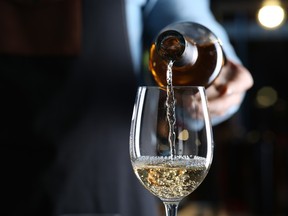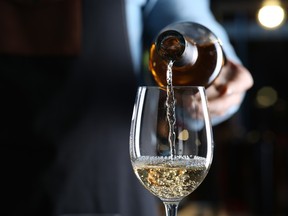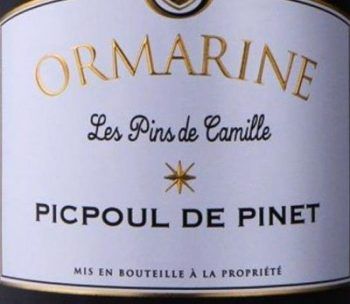Reviews and recommendations are unbiased and products are independently selected. Postmedia may earn an affiliate commission from purchases made through links on this page.
Anthony Gismondi: If it’s non-alcoholic, please don’t call it wine

A declining market for alcohol among younger generations and a shrinking market of baby boomers has wineries nervous

Article content
Several interrelated thoughts this week are undoubtedly contributing to the chaos that has beset the global wine business. Climate change has been at the root of many of wine’s recent challenges. Still, an even more troubling issue might be the World Health Organization’s proclamation that no level of alcohol consumption is safe when it comes to human health.
Advertisement 2
Article content
No matter what your position on the studies or the science, the WHO statement has fuelled the well-funded anti-wine lobby to turn up the volume, and the results are a declining market for alcohol among younger generations. Coupling that with a naturally shrinking market of baby boomers drinking less and eventually aging out, you can see why wineries are nervous.
Article content
The real wine market, which has been around for 8,000 years, is hardly in danger, but it is only a part of the current milieu of industry players, many of whom have been on a 50-year rampage of planting vines and selling wines from places it should never have. The lure of owning a winery may be greater than the lure of opening a restaurant, even if only a tiny percentage of the public has the chops to operate either challenging enterprise. Only a few people drank or talked about wines in the 1970s or ’80s, and it could be that wine will retreat to that level again.
The above has opened the door for a burgeoning non-alcoholic beverage market. I have often wondered why the powerful wine, beer and spirits sector has put up with the non-alcoholic sector appropriating the use of their monikers for products that contain no alcohol. It’s not wine, folks.
Advertisement 3
Article content
As if on cue, last week, Italian agricultural minister Francesco Lollobrigida, the brother-in-law of Italian Prime Minister Giorgia Meloni, asked that the word wine be removed from alcohol-free wine products. Speaking to Drinks Business online, Lollobrigida says: “Let’s make non-alcoholic drinks, but not call them wine.” I couldn’t agree more for one simple reason: It’s not wine. It’s some sort of beverage that undergoes a series of highly technical machinations in which the original alcohol is stripped from the wine along with much of its flavour and texture.
As I have stated before, wine critics — those who taste and review wine for a living, should refrain from rating non-alcoholic products. For the same reason, abstainers should not review and score real wine because, once again, there is no comparison between the products.
To illustrate the non-alcoholic issue, the makers of Bloom, one of the hottest-selling French non-alcoholic sparkling beverages that sells for $60 a bottle in England, describe their partly oak-aged base wine as being “acidified with tartaric acid to create a wine that is overly acidic and overly oaky; it is almost undrinkable, and then we de-alcoholize in three steps, from 12 per cent alcohol by volume to 2 per cent, then 2 per cent to 0.5 per cent, then 0.5 per cent to 0.0 per cent.” They also worked with a fine sparkling-water producer to find a way to inject the tiniest of bubbles into the bottle so they persist in the glass like real sparkling wine. It’s impressive work, and the product sounds interesting, but don’t call it sparkling wine. By the way, the 1,200-word Drinks Business article referred to Bloom as a wine or sparkling wine 42 times.
Article content
Advertisement 4
Article content
As mentioned above, all of those will have a dramatic effect on the historical restaurant model, which is built around the large markups on alcohol and tips that accompany sales. Suppose there is an appreciable drop in people ordering alcoholic drinks. In that case, there may not be enough revenue to sustain the current restaurant model as we know it unless the abstainers are willing to pay the same prices wine drinkers face.
If you need more evidence, look at the large number of B.C. wineries, B.C.ale and the increasing number of restaurants struggling to pay the rent. Everyone is contending with ever-rising prices for almost everything they touch, while much of the customer base is dealing with similar issues at home, and no one has any answers.
Weekend wine picks

Jabber The Winemaker The Blend Sauvignon Blanc 2023, Valle de Casablanca, Region de Aconcagua, Chile
$22.99 I 90/100
UPC: 850038330002
When Kim Crawford sold the winery to Constellation Brands, they bought his name too. Jabber is what his friends call him, and his new label in Chile might be his most important work. Working with granitic soils, red clays, black chalk, slopes, and three microclimates within Casablanca, Crawford makes deliciously bright, citrus-powered Sauvignon with a tight mineral, reductive note, and less biting acidity. It is a Chilean version of Sancerre with a riff of ripeness running through the wine. Ready to drink with mussels, clams, or freshly shucked oysters. Fine value. Private wine shops only.
Advertisement 5
Article content

Passato Roero Arneis 2021, Langhe, Cuneo, Piedmont, Italy
$25.99 I 91/100
UPC: 857852002733
From Roero, Piemonte comes Passato, a straw-coloured Arneis with a floral, almond, and green melon nose, at only 13.5 per cent. Post ferment, it spends six months on its lees to broaden the midpalate, pitching ripe pear, textural citrus, and almonds over a mineral stony base, finishing with exotic, bitter, food-friendly tropical fruit. It is a delicious wine with an array of West Coast seafood dishes. Make this a fixture on the deck. Private wine shops only.

J. de Villebois Sauvignon Blanc 2022, France
$26.99 I 89/100
UPC: 3760189780519
We saw this wine last vintage and thought it was impressive, and it was just fine in 2022. The Vin de France cuvée gives J. de Villebois the leeway to work outside Sancerre with grapes grown on the cool Atlantic Coast and in the Loire Valley. Don’t be fooled. The result is more Sancerre than Vin de France, which means you get a Sauvignon that overdelivers for its price. Fresh, dry and linear, there is a line of citrus and gooseberry with a slight tug of dryness. Still, it’s a treat for the price and should be an easy order with fresh oysters.
Advertisement 6
Article content

Torres Celeste Crianza 2019, Ribera del Duero, Castilla-Leon, Spain
$26.99 I 92/100
UPC: 8410113003508
Celeste has a history of over-delivering for the price, and it is easy to know why. It could be the sheer elegance, the drinkability or both. Whatever it is, you need to stock up. It is a fabulous restaurant wine, making it an even better value if you buy it and drink it at home. The all-Tempranillo red has muted, smoky undertones that mix with black cherries, a dash of oak and a warm, long, lush, balanced finish. This is crazy delicious, and it is your choice: you can drink it or cellar it for five more years. It is on sale until April 27 in 67 B.C. liquor stores.

Altesino Rosso di Montalcino 2020, Tuscany, Italy
$28.99 I 90/100
UPC: 662255300337
Most Rosso di Montalcino is made from younger vines and juice that never made the Brunello cut, but not at Altesino. Everything is estate grown, and the Rosso lives its one life mainly faithful to the house style, which is elegance supported by red fruits and spice. Look for light, breezy cherry and raspberry mixed with polished leather, dark plums, and earthy dried herbs mid-palate. Fragrant, accessible, and with bright acidity, I love this with anything mushrooms or grilled chicken off the barbecue. This is baby Brunello at its best on sale until April 27 in 47 B.C. liquor stores.
Advertisement 7
Article content
Calendar items
The Naramata Bench Spring Tasting is coming to Vancouver on Friday, May 3, from 5 p.m.- 8 p.m. at Vancouver Community College, 250 W. Pender St. in downtown Vancouver. It will be the first opportunity to try the new releases from over 20 wineries within the Naramata Bench wine region. Small bites and charcuterie will be served as an accompaniment to the wine. Tickets are $50 each here.
•••
According to the latest LendingTree survey of 2,000 U.S. consumers, our American friends are cutting back on booze. Among the key findings, 37 per cent of American drinkers plan to reduce or eliminate their alcohol intake this year.
This figure is even higher for Gen Z’ers: Of the 47 per cent who said they drink alcohol, over half (53 per cent) plan to cut back or quit this year. Across all drinkers who want to dial back, they’re most likely to do it for their physical health (64 per cent), finances (41 per cent) and mental health (37 per cent). Some blame alcohol for their overspending. And 45 per cent of drinkers say they’ve regretted overspending on alcohol and partying, and 17 per cent acknowledge that buying booze has led to debt. Across generations, millennials are spending the most on alcohol, at an average of $110 monthly. When asked about their reasons for drinking, 66 per cent said relaxation, 51 per cent cited socialization, and 43 per cent said taste.
Advertisement 8
Article content
Wine of the week

CheckMate Artisanal Winery Queen Taken Chardonnay Dekleva Vineyard 2021, Golden Mile Bench, Okanagan Valley
$125 I 96/100
UPC: 776545802903
Queen Taken is a historically significant Canadian Chardonnay, beginning with its 46-year-old vines located on the first Okanagan sub-Gi: the Golden Mile Bench. The Checkmate viticultural team has painstakingly restored the vineyard over the last decade, which has reshaped the earlier versions of this wine, taking it down a leaner, more complex road, reducing the alcohol and upping the freshness. Queen Taken is like no other Checkmate label and will be the beacon for the coming releases under winemaker Spencer Kelly. It will be tighter, fresher, and more Burgundian if you like. In the glass are notes of pear, ginger and wet stones. The minerality leads on the mid-palate with an assist from a savoury, vibrant undercurrent. First class. Winery direct.
Value wine of the week

Ormarine Picpoul de Pinet Les Pins De Camille 2021, Picpoul de Pinet, Coteaux du Languedoc, Languedoc, France
$16.99 I 88/100
UPC: 3186127768690
Advertisement 9
Article content
The Omarine Picpoul de Pinet has been a regular feature on Monopoly shelves for years, and for a good reason: it overdelivers. Oddly, it has no other challengers, although other private sector selections exist. This slim southern French variety is an enticing, food-friendly grape that makes everyday wine especially suited to summer, decks, patios, bite-sized food, or a bowl of steamed clams. Fresh and citrus-scented with a mix of honey and quince, its juicy grapefruit and ginger palate is difficult to ignore. It is on sale until April 27 in 110 B.C. liquor stores. Stock up for summer.
Recommended from Editorial
Bookmark our website and support our journalism: Don’t miss the news you need to know — add VancouverSun.com and TheProvince.com to your bookmarks and sign up for our newsletters here.
You can also support our journalism by becoming a digital subscriber: For just $14 a month, you can get unlimited access to The Vancouver Sun, The Province, National Post and 13 other Canadian news sites. Support us by subscribing today: The Vancouver Sun | The Province.
Article content
Source: vancouversun.com


